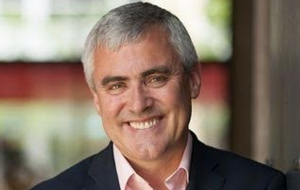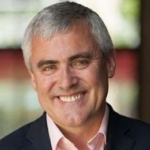Target has remained cutting edge over the years, not only compared to other brick-and-mortar stores, but also compared to young startups as well. In the second of a two-part interview, Target CIO Mike McNamara shares how his team chooses the best tools for the job – and what CIOs need to know to thrive in the future.

The Enterprisers Project (TEP): Do you have any guiding principles or rules that you rely on when evaluating new technologies?
 McNamara: There are fundamentally two camps of technology we evaluate: the first is the technology used to build technology, and the second is technology and software that executes business functions and guest transactions. The former, technology that builds technology, there’s a new flavor every month, so our approach is a little more fluid. If you make a mistake, then you change your mind and try something else. The latter has got to live a long time, so we’re very, very considerate about these decisions. We ask ourselves: Does it have longevity, is it robust, is it operationally sound? Essentially, is this something we want to leave to our successors?
McNamara: There are fundamentally two camps of technology we evaluate: the first is the technology used to build technology, and the second is technology and software that executes business functions and guest transactions. The former, technology that builds technology, there’s a new flavor every month, so our approach is a little more fluid. If you make a mistake, then you change your mind and try something else. The latter has got to live a long time, so we’re very, very considerate about these decisions. We ask ourselves: Does it have longevity, is it robust, is it operationally sound? Essentially, is this something we want to leave to our successors?
TEP: Where can or should CIOs go to stay current on what’s important in the world of IT? Where do you turn?
McNamara: I turn to my engineers. That’s where I learn the most. At Target, we do this formally with our architecture forum every quarter. I’ll also walk the floors to learn and visit with engineers. You can also learn a lot from your suppliers. What we try to do with key suppliers is get our engineers and their engineers together to talk about their product development road map. We want to hear from their practitioners and product managers. Another very useful source of information is the VC community – where they’re investing and where they think there’s a commercial opportunity can tell you a lot about where technology is headed.
TEP: How has open source informed Target’s technological direction?
McNamara: Open source is a core building block for Target’s technology – it’s hugely important. More and more, the technology we use to build software and operate technology is open source. We’re always looking to the open source community more than anywhere else for innovation in technology, because that tends to be where it’s coming from. My team and I believe in the movement, and that’s why Target engineers make contributions back into open source.
TEP: How has the CIO role changed from a decade ago?
McNamara: It’s shifted from a focus on productivity-type outcomes – lower costs, better efficiencies – to generating sales and managing relationships with guests. And it’s changing again. Now more than ever, it’s about the strength of your software engineering factory.
In the past, large enterprise technology organizations were largely buying third-party software with engineers focused on cobbling them together. That was really the mainstay, and then you did some bespoke development around core processes that were unique and differentiating. Today, technology is so vital that you’ve got to consider most things unique and differentiating. So development is now core to enterprise IT and there’s much, much less room for commoditized software. That’s an enormous change, and a change that makes it an absolutely fabulous time to be in technology at a place like Target.





